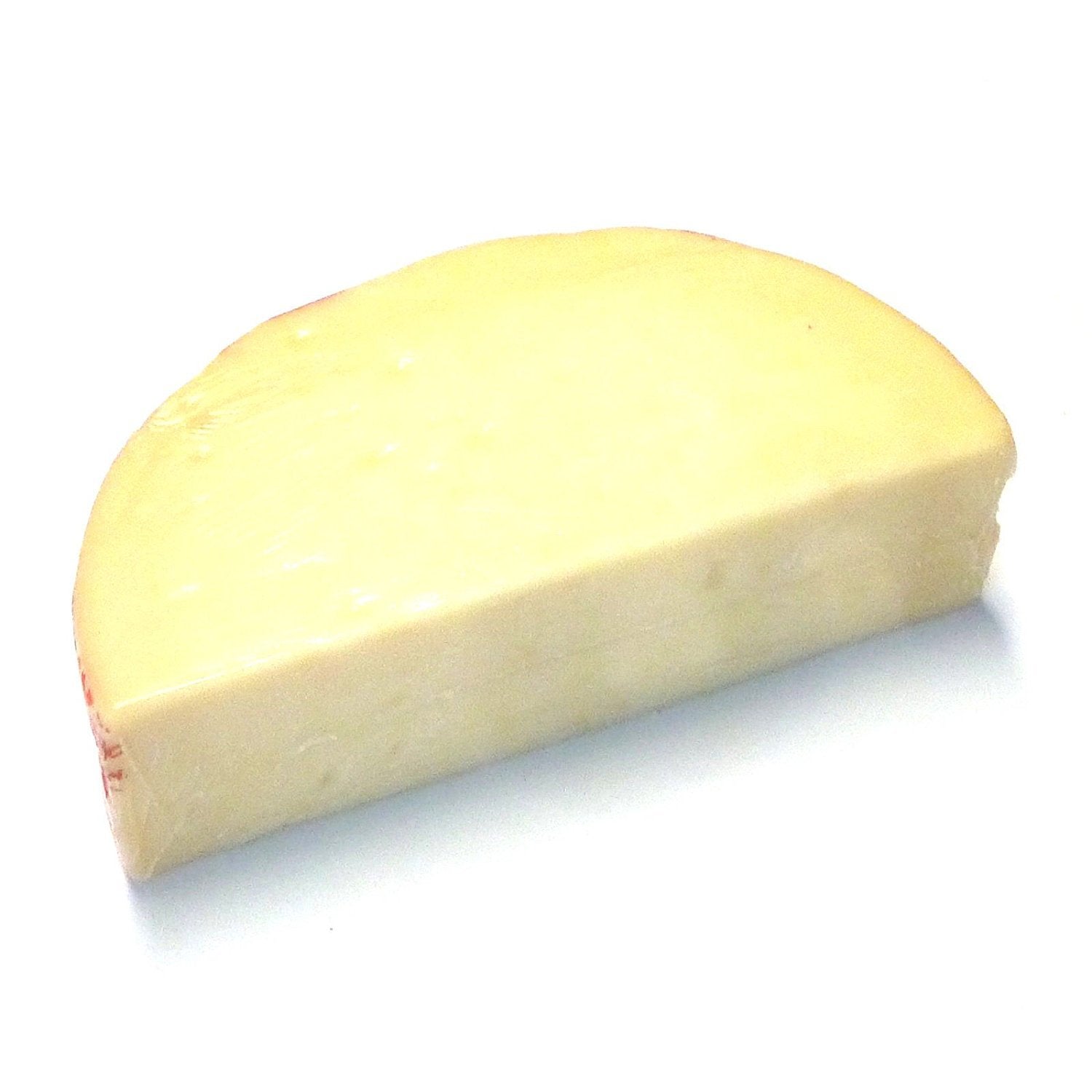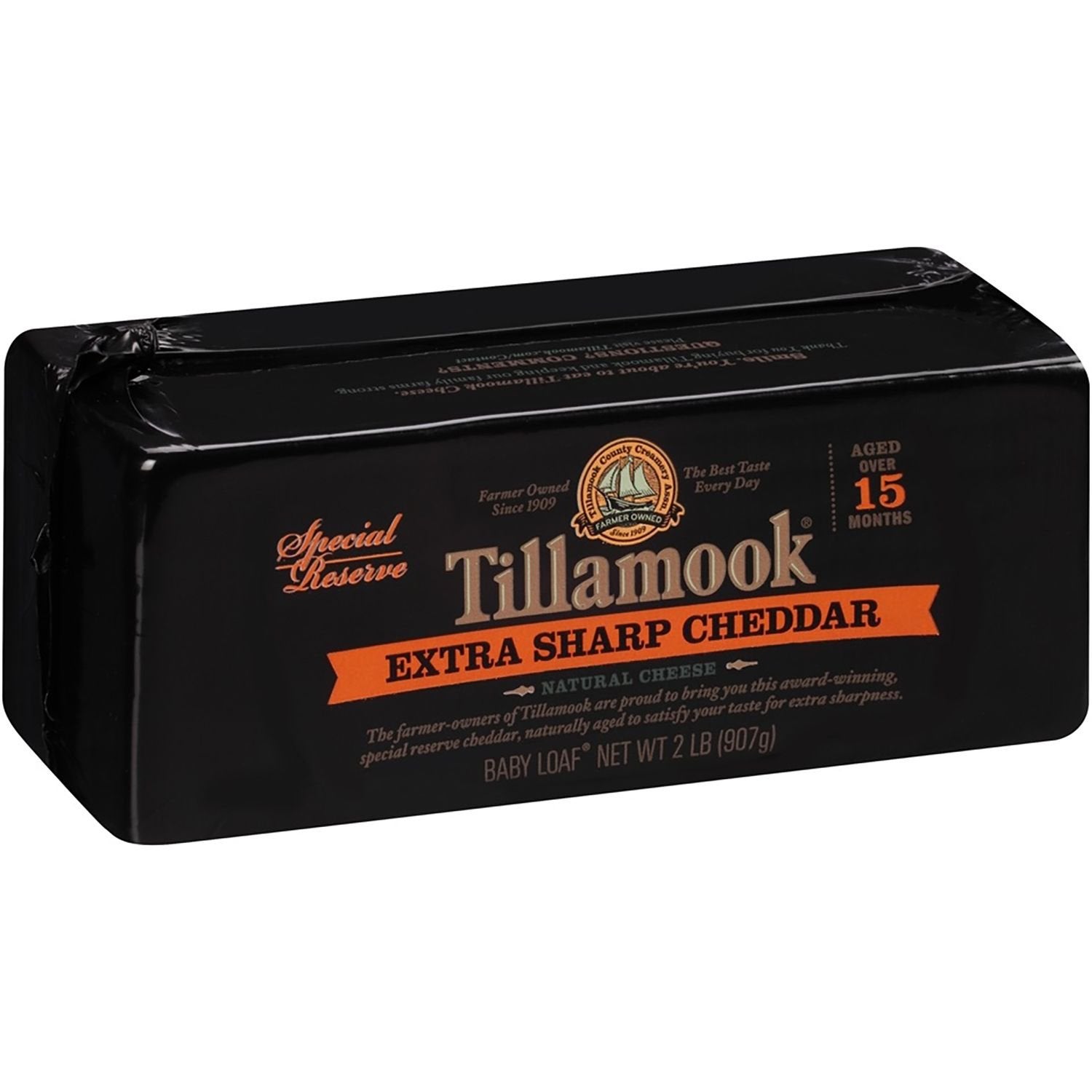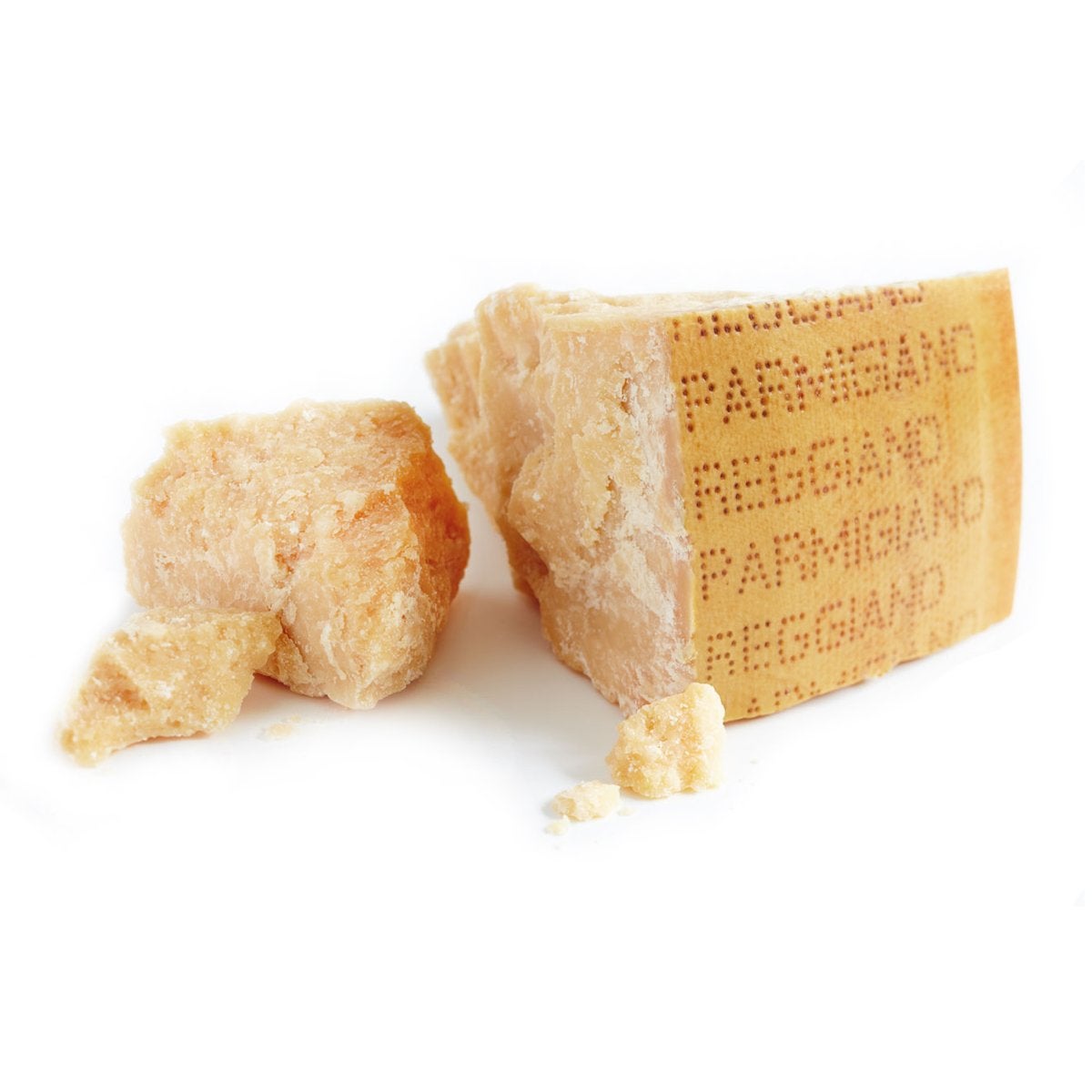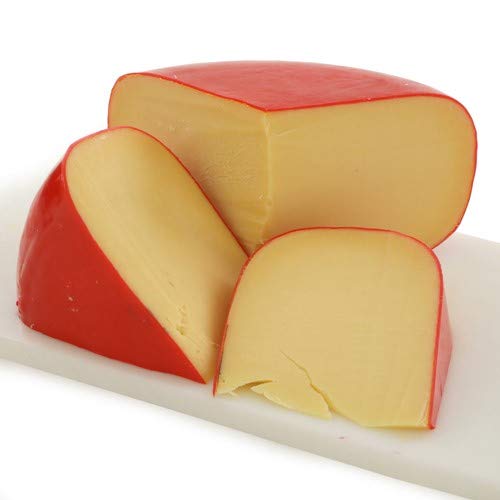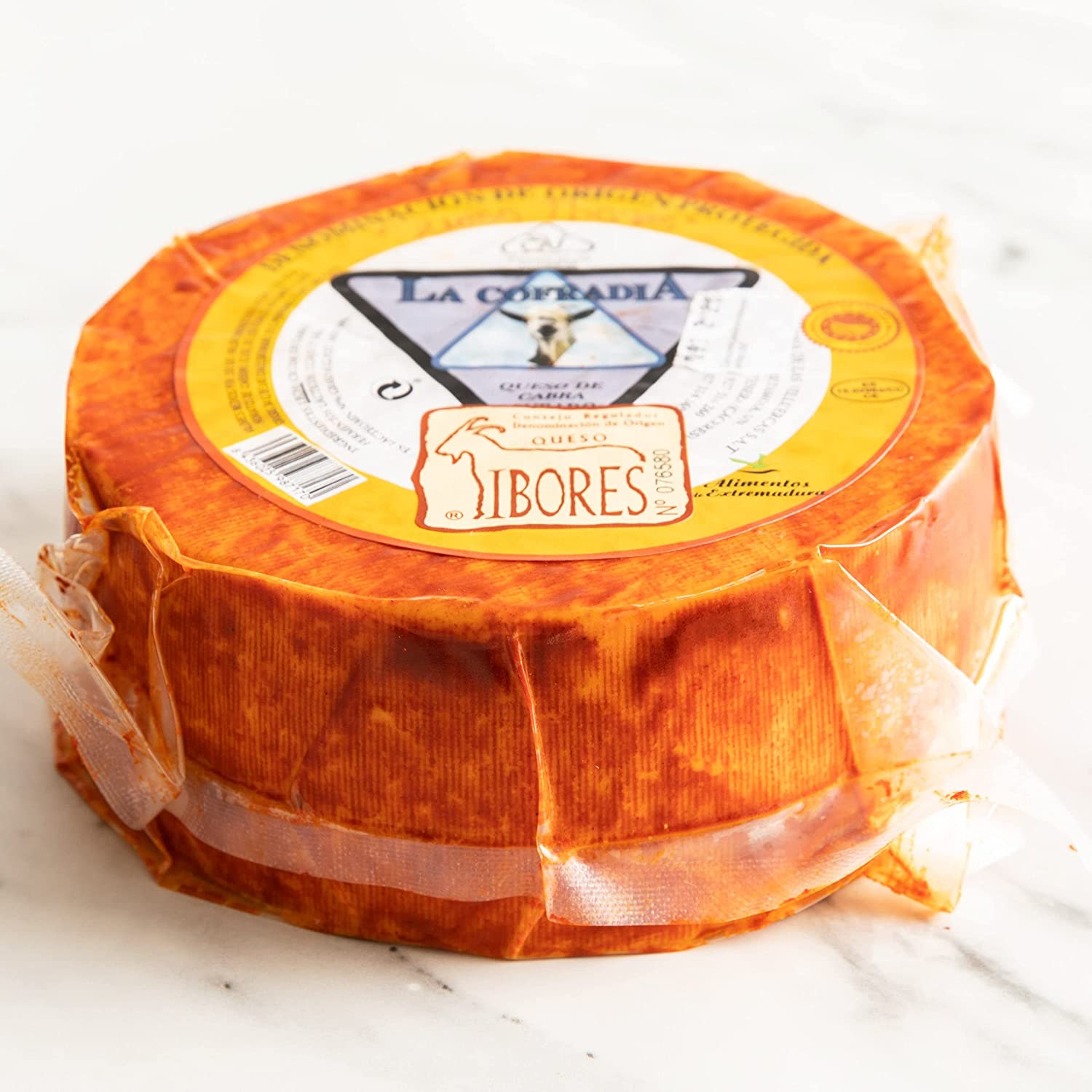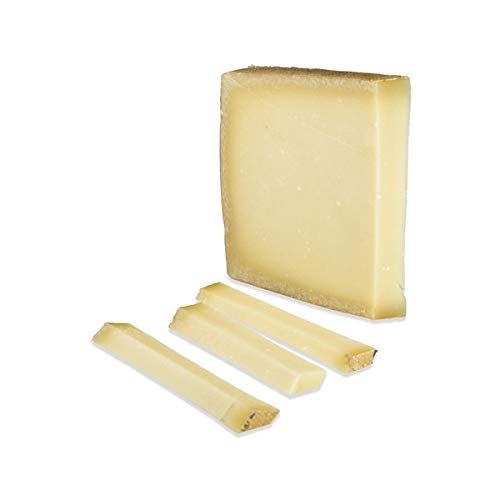Best Cheese for Pizza
Pizza is one of the truly global comfort foods; and divides opinion like none other. Some people prefer plain cheese Neapolitan, some like a deep-dish Chicago style pizza, and some even like pineapples on their slice a la Hawaiian pizza (pretty bold choice, we must say).
The one consistent aspect of pizza that has led to global fandom is cheese. Everyone loves cheese!
Different people like their pizzas differently. Even if you have minimum experience eating pizza, you would know that the secret to a good pizza lies in choosing the perfect cheese; mozzarella, cheddar, provolone, parmesan being the most popular options to choose from.
Which cheese should you choose for your pizza? That depends on the style of pizza you want. Let’s take a look!
Best Cheeses For Pizza
From mozzarella to goat cheese, we’ve curated our seven picks for the best cheeses to put on pizza:
1. Editor’s Choice: Sharp Provolone Cheese from Vantia
Provolone is an aged pasta filata (stretched-curd) cheese originating from Italy. The cheese has been in use since the late 19th century when it was first manufactured in the southern regions of Italy. A smaller variant of this cheese is known as provola, which comes in plain and smoked varieties.
Provolone is made from full-fat cow’s milk and produced in different shapes. The largest provolone batches can go up to 3 ft. in length.
There are two types of provolone cheese: piccante and dolce. Provolone piccante has a sharp, saltier taste and is aged for a minimum of four months or even longer. Provolone dolce is sweeter, as the name suggests, and aged for less time.
Provolone, like its cousin mozzarella, is stretched-curd cheese. Smaller cuts of provolone, or provoleta, are served as discs that can be seasoned with herbs and eaten on their own.
When Should You Use This Cheese?
Provolone is intense in flavor, and it pairs well with toppings such as olives, red peppers, and hearty bread bases. It has a rich milkiness and a salty touch to it. Provolone piccante has a sharper and saltier taste to it and leaves an aftertaste.
Pros
- Sharper taste
- Creamy consistency (in the case of provolone dolce)
- Works well with tomato and pesto base
Cons
- Leaves a spicy aftertaste
- Drier texture
- Saltier flavor
2. Runner Up: Vintage Extra-Sharp Cheddar Cheese from Tillamook
Cheddar cheese is a sharp-tasting cheese that has a comparatively hard texture. It gets its name from the English village of Cheddar, where it originated from.
First produced in the 12th century or even earlier, It’s the second most popular variant of cheese after mozzarella and is the most readily available to buy.
It’s very rare to use a cheddar cheese base for pizza or use it as the only cheese on your pizza. Cheddar cheese comes in orange and white colors. While the cheese itself is naturally white, annatto is added to make it orange; this does not add to the flavor and is only done to give it a visual appeal.
Cheddar is fragile in high-heat situations and can scorch, giving it a pungent flavor. The fats in the cheese can separate from the solid and accumulate as oil; thus, use small amounts of cheddar mixed with another cheese for best results.
When Should You Use This Cheese?
Cheddar cheese is a good addition to pizzas and pies because of its low elasticity. It features as an ingredient on many pizza cheese blends.
Cheddar cheese works well with toppings like ham, pepperoni, and salami because of its sharp taste. It’s also used on many specialty toppings such as buffalo chicken and ranch.
Pros
- Adds a sharp taste when used in pizza cheese blends
- Suitable to use on top of mozzarella because of low elasticity
- Orange cheddar adds color to your pizza
Cons
- Sharp, almost salty flavor
- Doesn’t melt well
- Doesn’t stretch well
3. Best Garnish: Parmigiano Reggiano Cheese from Alma Gourmet
Parmesan cheese is a hard-textured cheese usually grated over dishes such as pizzas and pasta or stirred into soups. It’s made from unpasteurized cow’s milk (that have only been fed grass), and its first use can be traced back to the middle ages.
Parmesan cheeses are aged for more than two years. It has a pale golden exterior and a straw-like off white interior. It is highly versatile and is a popular addition to various cuisines.
Parmesan is not mixed into cheese blends because of its dryness and intense flavor.
It is always added on as a garnish on top, never baked with a pizza. It can be put in the oven on low heat, just enough to melt slightly, like one would with a chicken-parmesan.
The heat causes it to clump and spoil the taste. It works well with Sicilian, Margherita, and Hawaiian pizzas.
When Should You Use This Cheese?
Parmesan is a cheese that should only be shaved on top of pizzas after baking and works best in small quantities.
It has a strong flavor, and most people find the aroma pungent. Parmesan compliments toppings such as pepperoni, prosciutto, and tomatoes.
Pros
- A grainy texture that melts in the mouth
- Works well on top of mozzarella cheese as a garnish
- Rich, strong flavor
Cons
- Does not work well with heat
- Cannot be mixed in with the pizza cheese blend
4. Best Aroma: Dutch Gouda Cheese from Igourmet
Gouda cheese is a rich, creamy cheese that works best with toppings such as pulled pork and shredded BBQ chicken. It also displays very slight stretchiness when used on pizza. Consider pairing gouda with smoked toppings such as ham.
Gouda is one of the oldest recorded cheeses in history and originates from the Netherlands.
It is a yellow-colored, mild-flavored cheese made from cow’s milk known for its rich flavor and smooth texture. It makes for an exciting addition to pizzas.
Gouda is classified into different categories based on aging time, ranging from young (aged for 4 weeks) to old (more than 12 months).
Younger gouda cheeses will have a mild, creamy taste and a smooth texture.
When Should You Use This Cheese?
Gouda cheese is a rich, creamy cheese that works best with toppings such as pulled pork and shredded BBQ chicken. It also displays very slight stretchiness when used on pizza.
Consider pairing gouda with smoked toppings such as ham.
Pros
- Aromatic and rich flavor
- Caramel-like after taste
- Texture can range from smooth to dense
- Smooth and dense
- Sweet after taste
- Aged for 18-months
- Large size
Cons
- Semi-rigid and does not stretch well compared to other cheeses
- Rigidity means that gouda is best in blends to round out flavor profiles
5. Best Soft Cheese: Ibores DOP Whole Spanish Cheese Wheel
Ibores DOP whole Spanish cheese wheel is made from goat’s milk. This goat cheese is aged for two months. During this time it’s rubbed down with both olive oil and paprika to enrich its flavor.
Spanish goat cheese is a hard cheese, and doesn’t melt like mozzarella or even cheddar. In short, it trades meltability for depth of flavor. This makes Ibores goat cheese a fantastic pairing for charcutier, or as flavor pockets on pizza when mixed into a blend.
When Should You Use This Cheese?
Since goat cheese does not melt like cow cheeses, it can’t be used as a base cheese. But it adds a nice flavor if it is added on top of the pizza crust in clusters.
Some toppings that work well with this cheese are peppers, olives, caramelized onion, and sausages.
Pros
- Soft texture with a deep and rich – almost desert-like – flavor.
- Pairs extremely well with preserves, salted meat, and sweet vegetables.
Cons
- Doesn’t melt to anywhere the same degree as softer, cow cheeses.
6. Honorable Mention: Gruyere Cheese 1 Pound from Mondo Food
Gruyère is a hard yellow cheese that originates from the town of Gruyère in Switzerland.
It has a sweet but slightly rich flavor, coupled with a grainy texture. The taste varies with the amount of time it has been aged; the younger variants are creamy, while the more aged ones have a robust and earthy flavor.
Its total aging time can range from 3 months up to a year.
When Should You Use This Cheese?
This cheese lends a soft, creamy flavor, and it doesn’t blister easily, which makes it go well with pizzas.
It melts well, and the flavors can range from sweet to earthy, depending on how long it has been aged. It will go well with toppings such as peppers, olive, ham, and pepperoni.
Pros
- Sweet flavor in younger varieties
- Earthy flavor when aged more
Cons
- Grainy texture which some might find unlikeable
Which Cheeses Are Used In Pizzas?
Doesn’t every pizza have mozzarella cheese? That is not entirely true or false; however, it is the most popular option to put on a pizza.
Mozzarella is known to have a one-dimensional taste; it works well with other ingredients and doesn’t subdue your taste buds. Some professional chefs like to blend mozzarella with different cheeses to give their pizzas better texture and a unique flavor.
What other cheeses are you likely to find on your pizza slice? There’s provolone, cheddar, gouda, gruyère, and ricotta.
If you plan to experiment with creating your blend of cheeses, you must consider a few things.
Important Features When Choosing A Cheese For Your Pizza
When choosing cheese for your pizza, it is essential to understand that not all types of cheeses serve the same purpose.
Parmesan can be added as a finishing touch, while mozzarella is considered a good base to build on. Chefs routinely blend different cheeses on pizza; this results in slices that drip stretchy strands of cheese that melt in your mouth.
Let’s look at a few factors you should consider when buying cheese for your pizza:
Meltability
A hot slice of pizza that melts in your mouth is a crucial part of the pizza-eating experience. When choosing your cheese, you want something that melts easily.
Aged cheeses, such as parmesan, usually have an imbalance between its fat and water content; this causes the fat molecules to clump together. This is the reason why aged cheeses have a more rigid texture and are difficult to melt.
Even aged cheeses with high moisture will face difficulties melting smoothly.
High moisture cheeses that have not aged much, like mozzarella, gruyère, and brie, melt well. However, if stored in high temperatures or faced with extended periods of warmth, their water content dissipates.
This causes clumping and browning in cheeses that are usually easy to melt. It is imperative to know where your cheese is coming from and how it has been stored; otherwise, instead of a blend of fine melted cheese, you’ll be left with greasy clumps on top of your pizza.
Stretchability
Pizza shops and cheese purveyors routinely use images of stretchy cheese strands for marketing themselves and advertising their products. A well-known chefs’ saying is that you eat with your eyes first, which explains the love for these strands.
Generally, cheeses that melt well also stretch well. So, younger cheeses with high moisture content, such as mozzarella and young gouda, are cheeses that will give you a good stretch.
Some cheeses maintain their structure even after melting, such as paneer and ricotta. Higher fat cheeses have a good melt and stretch.
With that out of the way, let’s look at some of the cheeses that you can use in your pizzas!
FAQs
What kind of cheese goes on pizza?
Classically styled, Italian pizza relies on high-moisture mozzarella. This comes from the basis for every pizza – the Margherita with basil and tomato sauce. With that said, it’s not out of the question to have pizza made mixtures of mozzarella, provolone, and parmesan. More modern takes on pizza can also use gouda, gruyere, and goat’s cheese.
What cheese do you use for homemade pizza?
The best thing about homemade pizza is that you’re in complete control. Although mozzarella is by far the most common topping you can easily swap it out for cheddar, or a blend. Pizza is flexible enough to be a date night special, or a once-around-the-kitchen whirlwind to use up ingredients before a big shop.
What’s in the 4-cheese blend for pizza?
Traditionally 4-cheese pizza uses mozzarella, gorgonzola, parmesan, and fresh cheese like robiola or stracchino. In America this blend has been modified. American 4-cheese blends tend to have low-moisture mozzarella, high-moisture mozzarella, cheddar, and parmesan (in some cases Parmigiano Reggiano.
Can you use Buffalo cheese for pizza?
Absolutely! Buffalo mozzarella cheese is a fantastic alternative if you can’t find cow-milk mozzarella. If anything buffalo mozzarella offers a softer, creamier, and tangier alternative for a traditional margarita or more progressive Neapolitan pizza.
How much cheese do you put on pizza?
For a standard 12-inch pizza go for about 4 ounces of mozzarella, or your preferred cheese. For variety feel free to sprinkle a few tablespoons of a second cheese like Parmigiano Reggiano on top. If making a blend we instead recommend considering the flavor profiles of each and worth within the 4oz plus maximum 3 tbsp formula.
Conclusion
The cheese is the most essential part of your pizza! We hope we have made it easier to know which cheese types will go well with which types of pizza flavors and toppings.
Good luck with your pizza-making endeavors!

